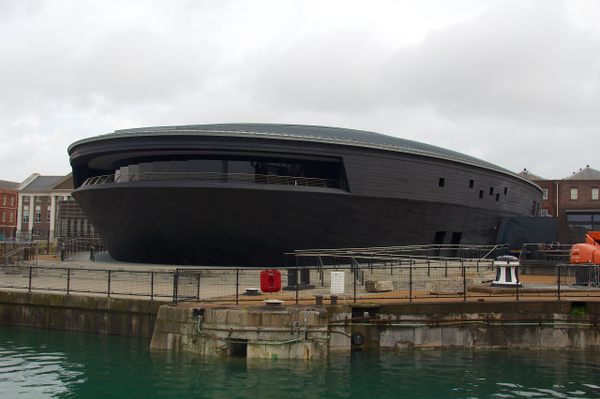Scientists Have Found a New Way to Keep Shipwrecks in Shape
Step one: acquire magnetic iron oxide nanoparticles.

Nearly 500 years after sinking, the celebrated Mary Rose warship has wind in its sails once more. Scientists from the University of Glasgow, the University of Warwick, and the Mary Rose Trust have devised a method for removing agents of rot from the ship’s body, offering shipwrecks everywhere a brighter future. Their research was presented today at an American Chemical Society conference in Boston.
Mary Rose served Henry VIII in three wars against France over a period of more than 30 years. The precise reason for its sinking in the Solent strait is disputed, but the sole eyewitness account maintains that a strong wind blew while the ship was mid-turn. On July 19, 1545, hundreds of men drowned aboard this oaken icon of Tudor naval culture, while approximately 34 survived. In the following weeks, a hired crew of Venetian salvagers endeavored to recover the ship, but to no avail. The best that divers could do, a few years later, was to scoop up some of the anchors and weapons on board. (The guns on the ship were valued at over £1 million in modern money, and the kingdom couldn’t let that kind of cash go to waste.)
The wreck then lay submerged and undiscovered until 1836, when a group of fishermen caught their nets on bits and pieces. To much fanfare, divers brought up artifacts such as guns, jugs, and even the mast until 1843, when the loot was thought to be exhausted and Mary Rose was scheduled for demolition. Though that demolition never took place, concurrent demolitions of other wrecks led many to believe the ship had been destroyed, and Mary Rose faded once more from divers’ eyes. It wasn’t until 1971 that the ship was rediscovered and proper excavations were undertaken.

As it turns out, four centuries of submersion isn’t so great for wood. During that time, bacteria lodged in the ship and produced hydrogen sulfide, which then reacted with iron ions—from cannons, for example—to produce iron sulfide. When the ship was pulled from the depths, these sulfides reacted with oxygen to form destructive acids.
Arduous conservation efforts have been ongoing since the ship was lifted out of the water in 1982. For years, preservationists countered the harmful sulfides by applying a supplement known as polyethylene glycol (PEG) to the hull, which prevented the wood from shrinking and cracking. But while PEG proved effective enough to keep Mary Rose on display, it was just a band-aid—it failed to do away with the catalyst driving the ship’s deterioration.
A team of researchers has developed a new treatment for the wood, one that removes those pesky iron ions without even damaging the wood. It goes like this: Magnetic iron oxide nanoparticles are laid down on the wood, protected by an adhesive polymer that can then be peeled safely off the surface with the dislodged iron ions clinging to it. Though this doesn’t reverse the damage of over four sunken centuries, it does strip the wood of the iron’s rusty, oxidized reddish hue—making it look more like it did when it sailed the high seas.
The researchers have begun applying the treatment to wood from Mary Rose, explained lead researcher Serena Corr from the University of Glasgow, but they first tried it out on the next best thing: oak soaked in iron solution. The team, Corr added, is currently developing versions of this treatment that can be safely applied to other materials found in the wreck, such as leather and rope. Until then, you can still see the ship and its artifacts in all their oxidized glory at the Mary Rose Museum on the Portsmouth Dockyards.























Follow us on Twitter to get the latest on the world's hidden wonders.
Like us on Facebook to get the latest on the world's hidden wonders.
Follow us on Twitter Like us on Facebook